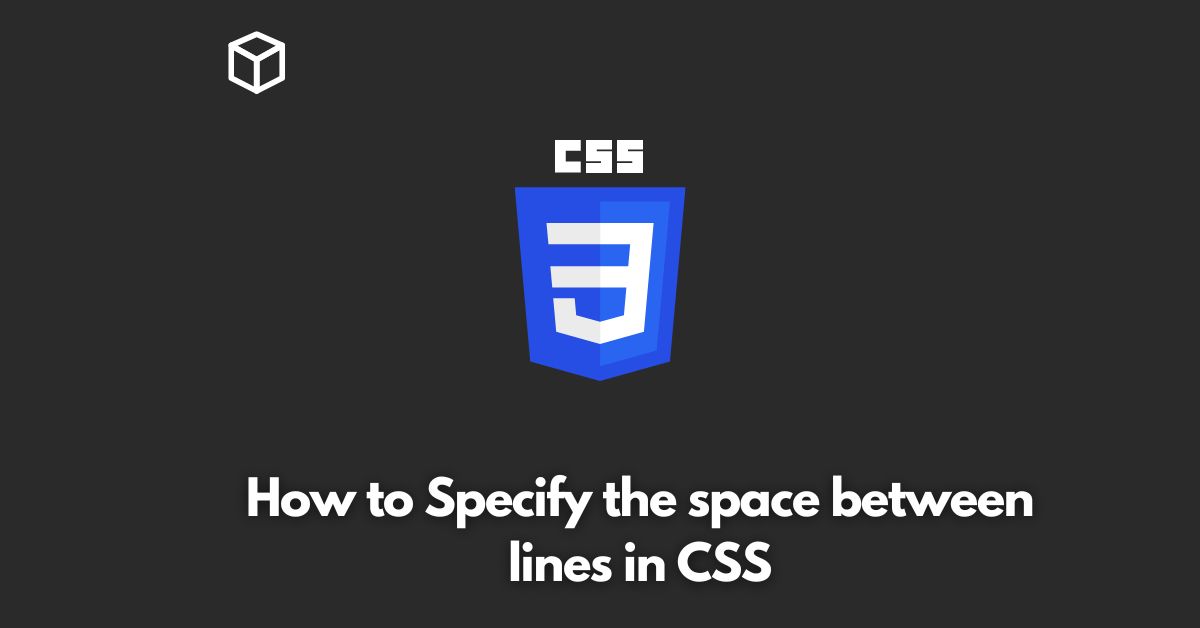CSS is a powerful tool for web developers and designers, allowing them to control the look and feel of their websites.
One of the many features of CSS is the ability to control the space between lines of text.
This is known as line spacing, and it can be a great way to improve the readability of your website.
In this CSS tutorial, we will discuss how to specify the space between lines in CSS and provide some examples of how to use this feature in your own web projects.
Introduction
Line spacing is a critical aspect of web design, as it can greatly impact the readability of your website.
By default, the space between lines of text is determined by the browser, which may not always be ideal.
With CSS, you can take control of the line spacing and adjust it to suit your needs.
In this CSS tutorial, we will discuss how to specify the space between lines in CSS and provide some examples of how to use this feature in your own web projects.
Line Spacing in CSS
In CSS, line spacing is specified using the “line-height” property.
The line-height property is used to set the height of a line of text.
This value can be set in several ways, including pixels, ems, or percentages.
Here is an example of how to set the line spacing to 1.5 times the size of the text:
p {
line-height: 1.5;
}In this example, the line spacing of all “p” elements on the page will be set to 1.5 times the size of the text.
You can also specify the line spacing using pixels, ems, or percentages.
Here is an example of how to set the line spacing to 20 pixels:
p {
line-height: 20px;
}In this example, the line spacing of all “p” elements on the page will be set to 20 pixels.
You can also use the em unit, which is relative to the size of the text.
Here is an example of how to set the line spacing to 1.5 times the size of the text using ems:
p {
line-height: 1.5em;
}In this example, the line spacing of all “p” elements on the page will be set to 1.5 times the size of the text.
You can also specify the line spacing using percentages.
Here is an example of how to set the line spacing to 150% of the text size:
p {
line-height: 150%;
}In this example, the line spacing of all “p” elements on the page will be set to 150% of the text size.
Conclusion
Line spacing is an important aspect of web design, and CSS provides a powerful tool for controlling it.
With the “line-height” property, you can specify the space between lines of text in several ways, including pixels, ems, or percentages.
By adjusting the line spacing, you can improve the readability of your website and make it more pleasant for your users to read.
It’s a small change but can make a big difference in user experience.




